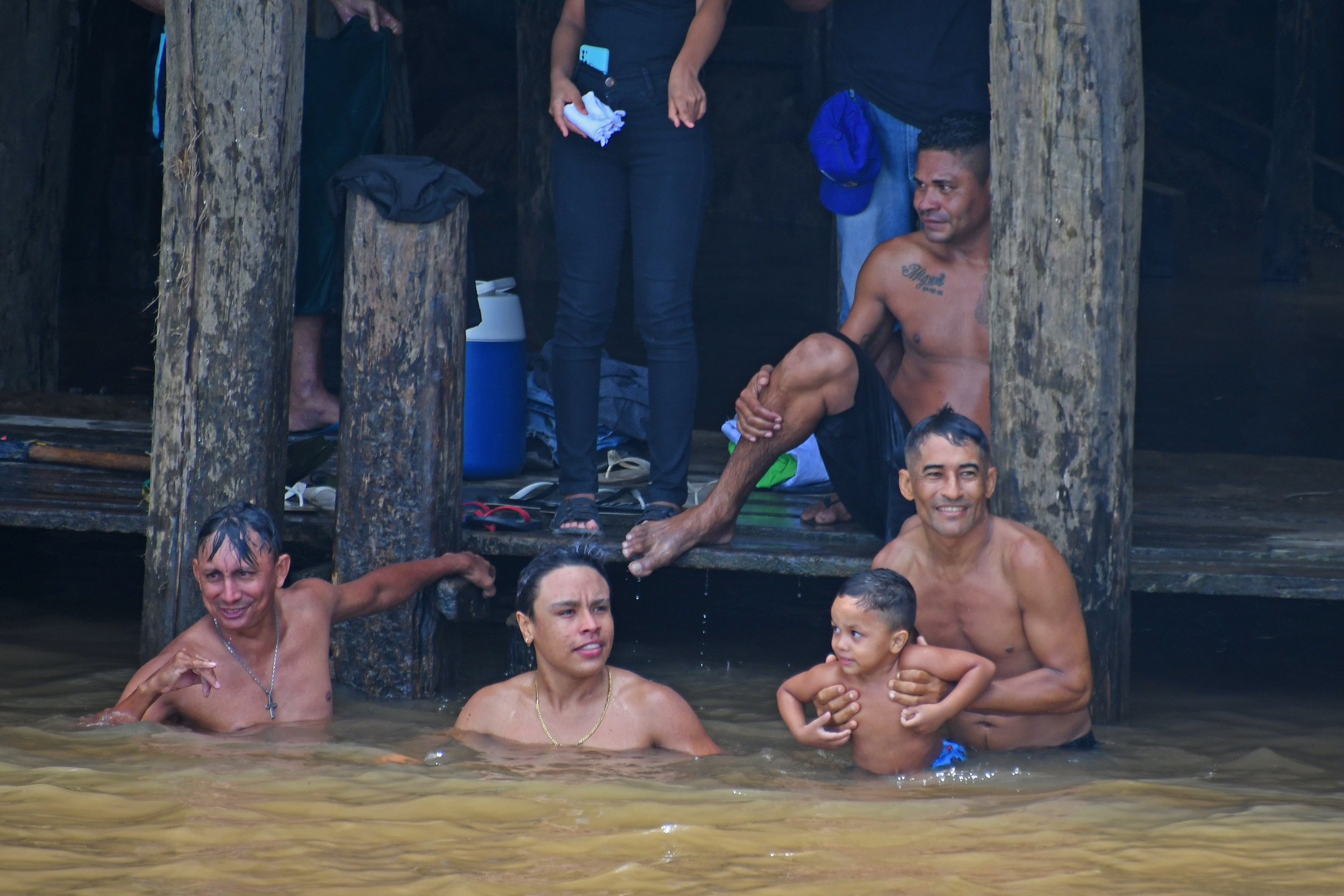Rio Negro, Amazonia, Brazil
Even if you were geographically challenged, you will probably know that the Amazon River empties into the Atlantic Ocean. But you may not know, that it wasn’t always that way. Until 15 million years ago, the water in the Amazon Basin drained into the Pacific. In spectacular fashion, the ancestors (most likely toothed whales) of the famous Amazon River dolphins migrated into the interior from the Pacific, where they lived in the inland seas of South America for millennia after the rising Andes mountains blocked access to the Pacific. In isolation, they “learned” to live in fresh water and evolved into a totally different species. When the Amazon finally drained into the Atlantic, the river dolphins stayed and never found the need to return to the ocean.
The Amazon River dolphin (Inia geoffrensis), also called “boto”, is one of four river dolphin sub-species that can be found in the Amazon basin. While there are minor differences among the sub-species, they are very similar in the way they live, hunt, and reproduce in the murky waters of the world’s largest rain forest.
The flooded Amazonian rain forest at night during rainy season. The female botos and their babies retreat to this part of the river for protection and to catch fish. The male botos mostly stay in the open part of the Amazon.
The river dolphins have adapted beautifully to their environment. As they cruised through the flooded forests of Amazonia in search for food or to seek protection during the rainy season, the botos developed bodies that are half the size of their distant cousins, the bottlenose dolphins (Tursiops truncatus). The river dolphins also have vertebrae that are flexible, allowing the botos to turn their heads 90 degr. and move effortlessly under water among the trees and rocks. The echolocation also differs from that of the bottlenose dolphin. The clicks the botos emits to locate prey and obstacles are less loud and more frequent than those required by the bottlenose in the open seas.
A typical ribereños home along the Acará River near Belem, Para State, Brazil.
Despite the fact that most Amazon river dolphins have a pink colour, they are actually grey when they are young. It is mostly the males that show their underlying pink skin colour after they have rubbed off their grey outer layer on trees and rocks in the flooded forests and fought other males for access to females. The more pink the dolphins show, the older (or more aggressive) they generally are. In the wild, botos live on average between 10 and 30 years. A river dolphin typically eats about 5% of its body weight in fish, crabs, and turtles per day.
The fish market in the town of Belem, Para State, is one of many places where ribereños sell the fish caught in the Amazon tributaries. The vultures on the roof tops can hardly wait for the next fishing boat to arrive.
Sadly, as in so many parts of the world, human/animal conflicts are also affecting the river dolphin population in the Amazon. The ribereños or river people (see also my essay “Amazon Basin, Brazil” in Archived Stories VI), who live in shacks and plain wooden cabins on stilts, subsist along the shoreline of the mighty Amazon. They rely on the same fish that the boto hunts for its survival. Frustrated by an ever diminishing catch and destroyed nets, many river dolphins are killed each year. Fishermen also kill botos for catfish bait. While this is a banned practice, the chances of being caught along this 7,000 km (4,350 mi) long river by the environmental police (IBAMA) are negligible, so the slaughter continues. Other threats the botos face include mercury poisoning from illegal gold extraction and loss of habitat from the construction of hydro electric dams.
The Amazon River dolphin is a critically endangered species. Their dwindling numbers (94% population loss since 2000) are caused by water pollution, overfishing, and killing by fishermen who use the dolphins’ meat as bait for catfish. A boto uses its teeth and strong jaws to crack open the shells of freshwater crabs and turtles. The colour of the water in this picture is caused by decomposed organic matter from the rain forest and is normal for the Rio Negro.
Because of muddy waters, the impenetrable flooded forests, and thousands of tributaries in the Amazon basin, it is almost impossible to know accurate population numbers. Recent estimates range from 2,000 to 10,000 dolphins remaining. The few studies that have been done show that the boto population in the Amazon is decimated by approximately 50% every 10 years. Restoring the river dolphin population is a slow and tedious process. Females carry their babies for 14 months and then nurse for another 2 years. As a result, female botos only reproduce every 3 to 5 years. Given the low population and many challenges the botos face in the basin, the rare Amazon river dolphin has now been categorized on the IUCN Red List as an endangered species.
Members of a local ribereños community take a dip to cool off under a dock along the Acará River
On a more positive note, there are numerous environmental initiatives under way among the ribereños communities up and down the Amazon River. A successful example of sustainable resource management is the Mamiraua Biosphere Reserve on the Solimões River, 1,400 km (900 mi) from the mouth of the Amazon. In this initiative, the combination of quota-controlled harvesting of fish, increased surveillance of the river to prevent poaching and illegal fishing, and population monitoring have led to a dramatic increase in fish stocks and have raised hopes that, given the right approach, a livelihood derived from fishing the Amazon River can be sustained for generations to come.
One can only hope that the same kind of determination, cooperation, and insight will be employed to save the Amazon River dolphin and bring the boto back from the brink of extinction.
~ RT





